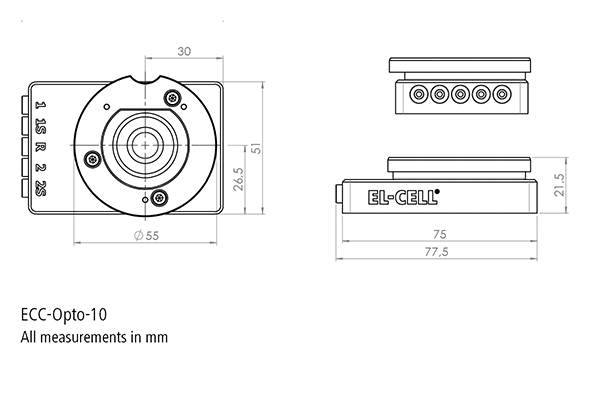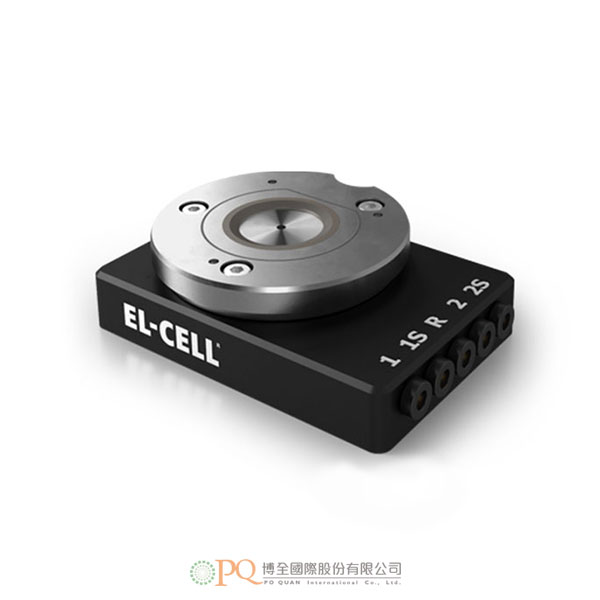ECC-Opto-10
ECC-Opto-10 型號:ECC-Opto-10Next generation battery test cell for operando characterization of electrodes using optical methods such as light microscopy or Raman spectroscopy in reflection mode.
- High cycling stability due to improved sealing concept
- Low profile design for use with light microscopes
- Dedicated sample holders for different electrode arrangements available
-
Test cell for optical characterization in the reflective mode.
Product description
The ECC-Opto-10 test cell is an advanced next generation battery test cell. It is designed for operando characterization of electrodes using light microscopy, Raman spectroscopy or XRD in reflection mode.
A newly developed sealing concept utilizing laser-welded glass-to-metal electrode feedthroughs and foil seals substantially increases cycle stability compared to the previous generation. The much more compact and low profile design allows use under a wide range of microscopes. We further optimized the cell design for easy assembly. Dedicated sample holders for side-by-side and face-to-face arrangements of electrodes vastly improve the handling.
The ECC-Opto-10 is connected to the battery tester via 2 mm cell cable with banana plugs. It can be used with the PAT-Tester-x-8 as well as potentiostats and battery testers from third-party manufacturers.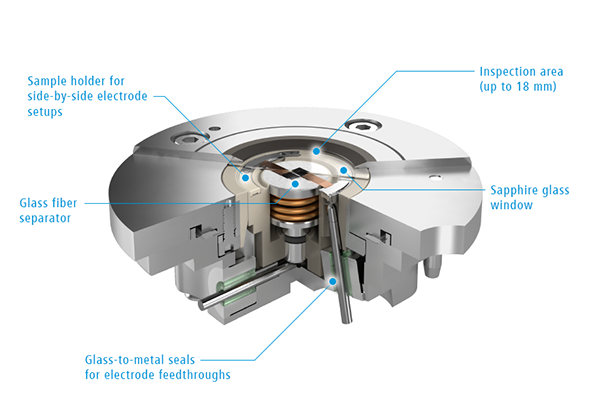
Sample test results
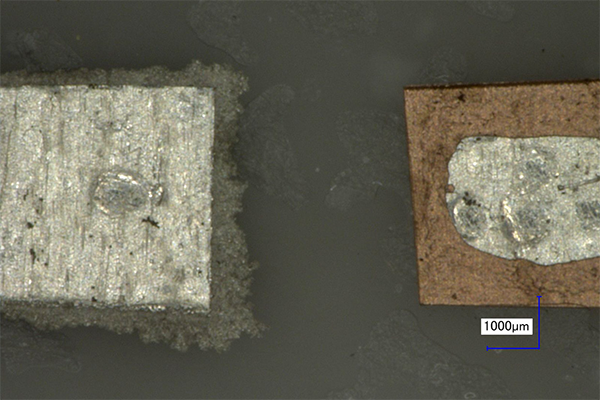
The picture shows two lithium metal electrodes – 20 µm lithium foil laminated on copper foil – beneath the sapphire window of the test cell. The electrodes are embedded into a glass fiber separator soaked with electrolyte. Applying a current of 20 µA for 5 hours makes the lithium to dissolve from the supporting copper foil (right electrode) and to plate as dendrites on the opposite side (left electrode).
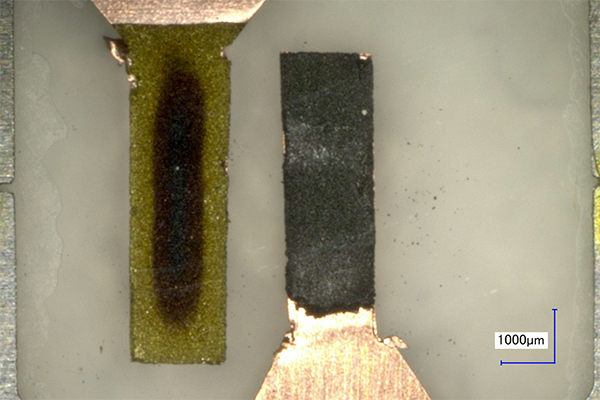
The picture shows two graphite electrodes embedded in a glass fiber separator soaked with electrolyte. The graphite electrode on the left is being lithiated from the lithium metal electrode below the separator. From the color change, one can infer the lithiation gradient within the graphite electrode. The right graphite electrode can be used in a follow-up experiment to send lithium ions back and forth between the two graphite strips.
Gallery
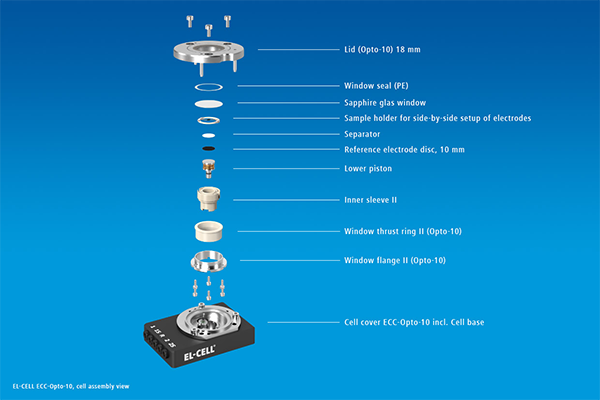
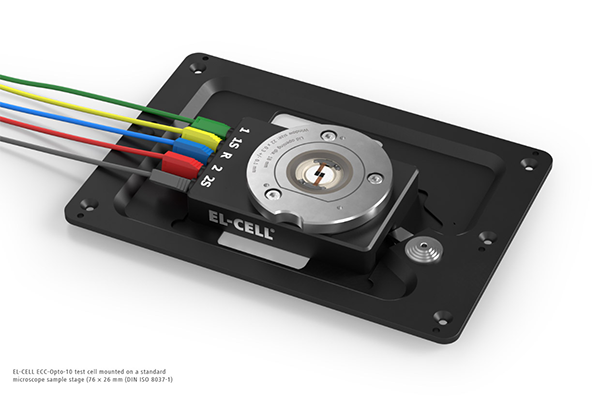
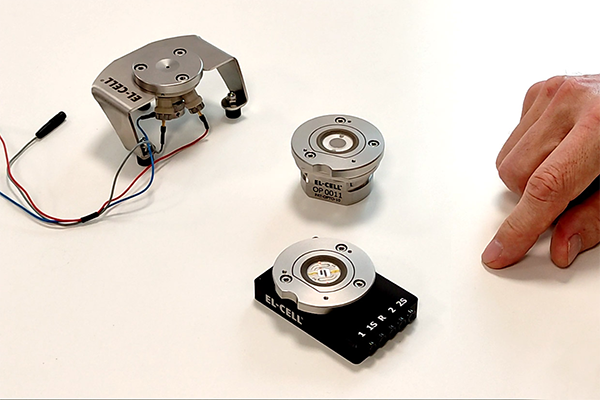
-
Height 21.5 mm Width 51 mm (base), 55 mm (in total) Depth 75 mm (base), 77.5 mm (in total) Weight 0.3 kg Electrode dimensions up to 10 mm Operational temperature range -20° to +70°C Dead volume 1.8 cm³ 